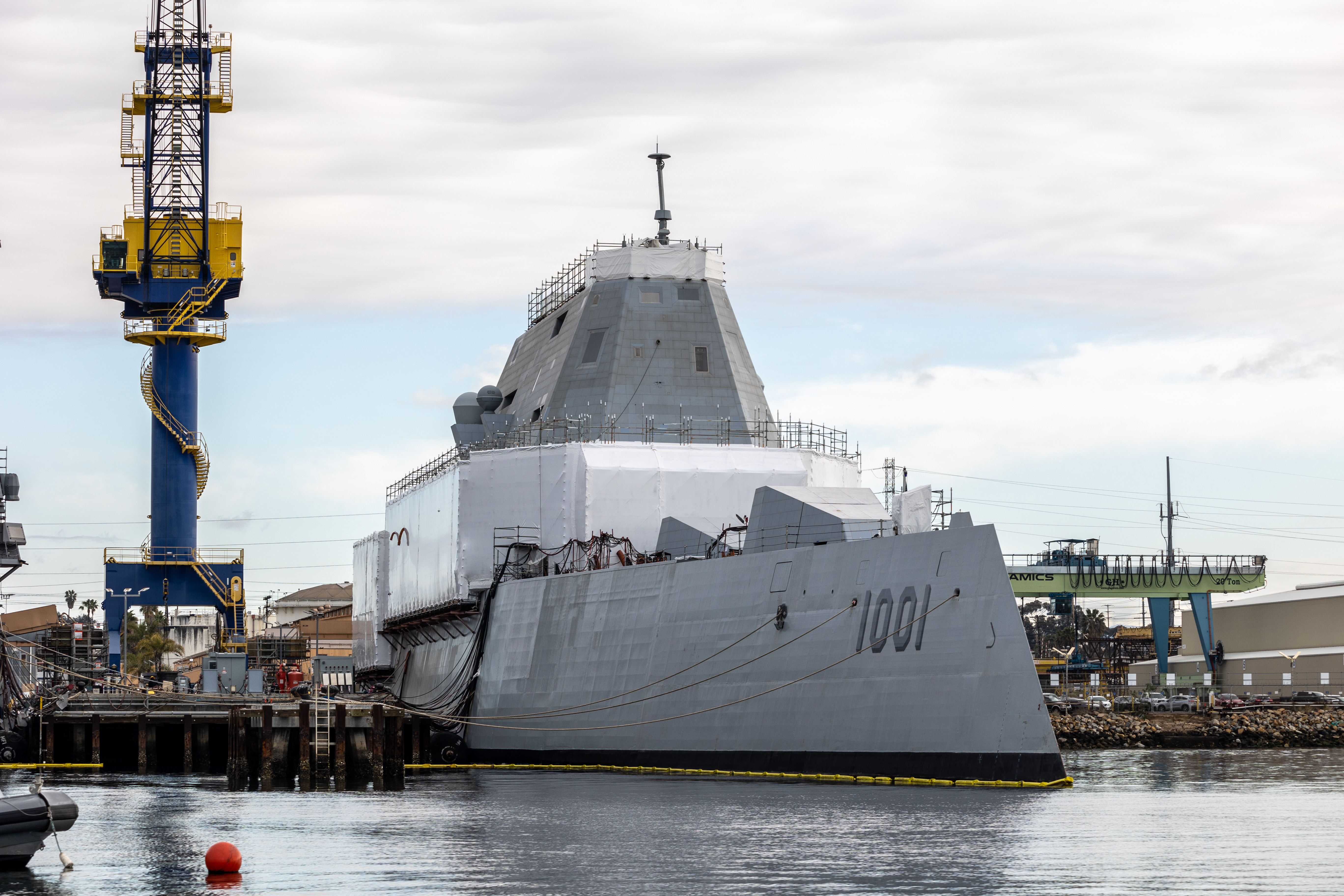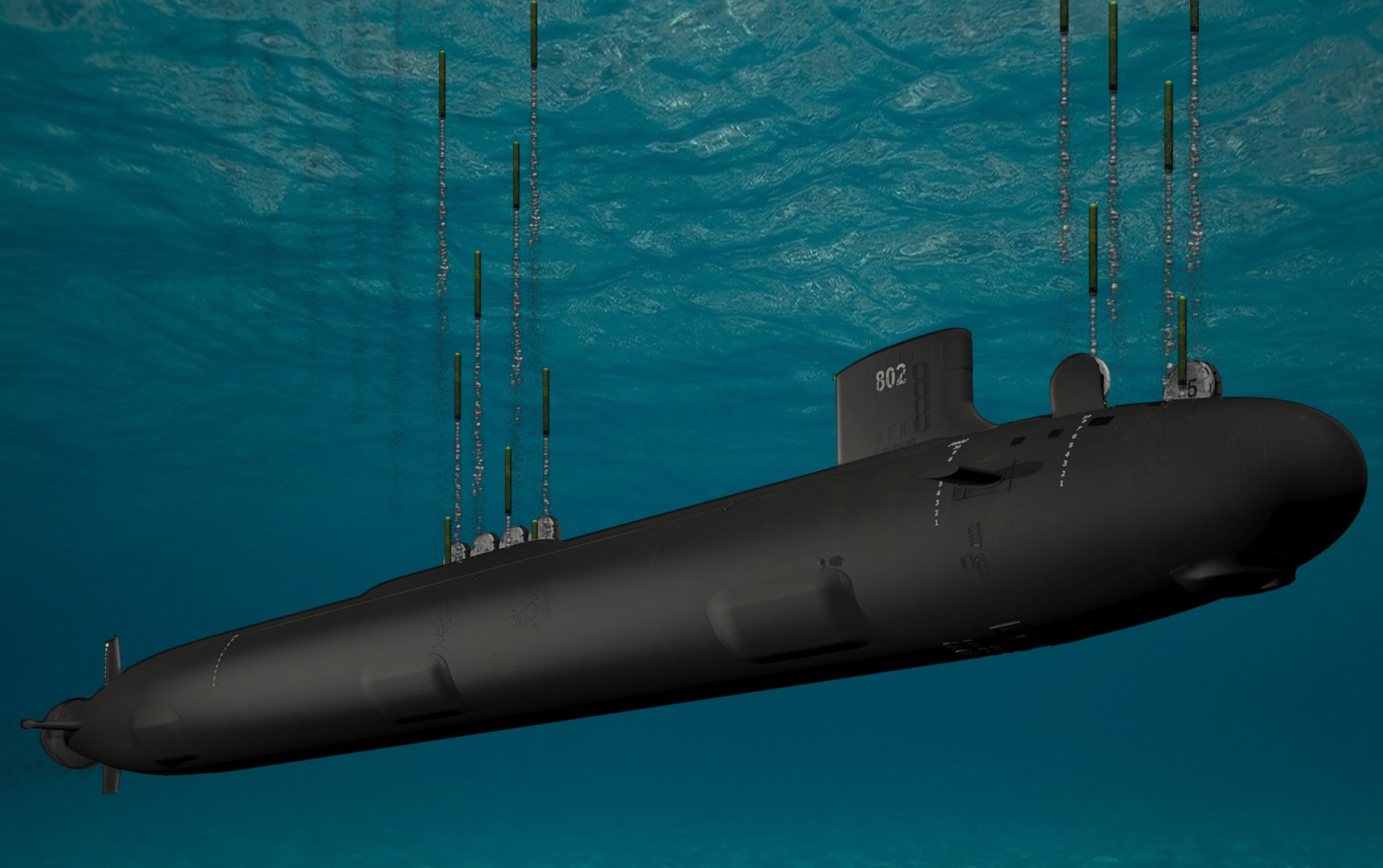
This post has been updated to correct the start of the USS Zumwalt (DDG-1000) availability and correct the hull number of USS Michael Monsoor (DDG-1001).
The three Zumwalt-class destroyers could face delays in fielding the first hypersonic weapons in the U.S. Navy surface fleet, according to a Thursday report from the Government Accountability Office’s annual weapons report.
The Navy planned to add launch tubes to USS Zumwalt (DDG-1000) during an availability at HII’s Ingalls Shipbuilding in Pascagoula, Miss., starting this year for completion by 2025. The following two ships in the $29 billion class – USS Michael Monsoor (DDG-1001) and Lyndon B. Johnson (DDG-1002) – will get the CPS tube installation in their own modernization periods.
The space now occupied by the 16,000-ton destroyer’s twin 155 mm advanced gun systems will get replaced with four 87-inch tubes for about a dozen Common Hypersonic Glide Bodies (C-HGB) – the joint round developed for the Army and Navy. The weapons are part of the Pentagon’s Conventional Prompt Strike capability, or the ability to hit a land target at long ranges with little to no notice.
However, that schedule could get hampered by testing of the Conventional Prompt Strike systems on at-sea platforms, the program told the GAO. The delays in fielding the CPS on Zumwalt in 2025 and the integration of the CPS come from both testing a maritime version of the C-HGB and the tight schedule to integrate the weapon into the hull of the three-ship Zumwalt-class.

“The CPS program office noted that significant scope and challenges associated with the first-time integration of CPS may present risks to achieving DDG 1000’s installation schedule. In reviewing CPS program office information on critical technologies, we found that significant work remains for the program to demonstrate technology maturity,” reads the report.
“If the hypersonic weapon is not ready for integration on the DDG 1000 at the time of the aforementioned maintenance period, the Navy may have to extend the duration of the planned maintenance period or wait for the next scheduled period to incorporate the system on the ship.”
To hit the Navy’s planned 2025 goal for hypersonic weapon integration, “we got to get on with getting all of the design for the Zumwalt, getting all of those tubes in there, as we pulled out the forward gun mounts. We’ve gotten to put these large diameter tubes in there, and then finish the integration work into the combat system,” Vice Adm. Johnny Wolfe, the head of the Navy’s strategic systems programs, said in November.
After backing away from the 155 mm AGS, the Navy singled out the Zumwalt-class ships for the hypersonic mission ahead of the Block V Virginia-class nuclear attack submarines. The Block V attack boats will include the Virginia Payload Module, which will also have room for the large hypersonic missile planned for delivery by 2028, but this has also been delayed, according to the report.

“In addition, as a result of delivery delays for the newest Block V Virginia class submarines, CPS will not be fielded on the submarine in phase three until 2030—2 years later than planned—unless another submarine option is identified,” reads the report.
The Zumwalt class faces other delays, according to the report. The initial operational capability for DDG-1000 is planned for April 2023 – more than six years behind schedule.
“The other two ships continue to face delivery delays. DDG-1001 final delivery was delayed 12 months to September 2023. While the program is working toward the completion of combat systems installation and activation for the DDG-1002, program officials stated that DDG-1002 final delivery moved from Fiscal Year 2024 to early Fiscal Year 2025,” reads the report.





